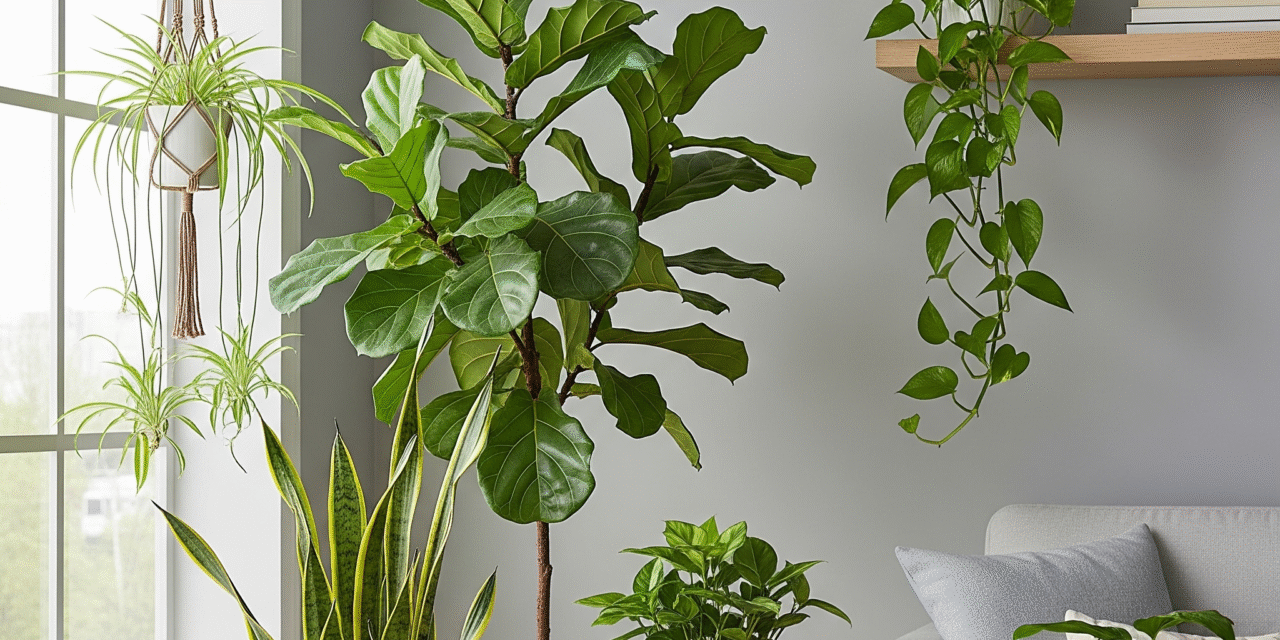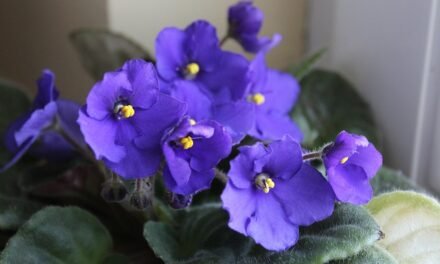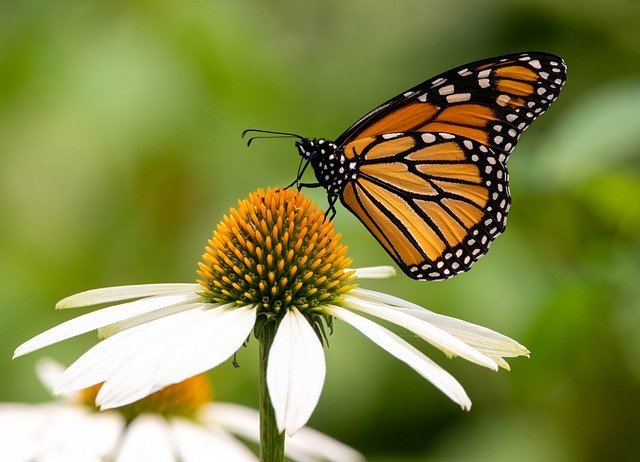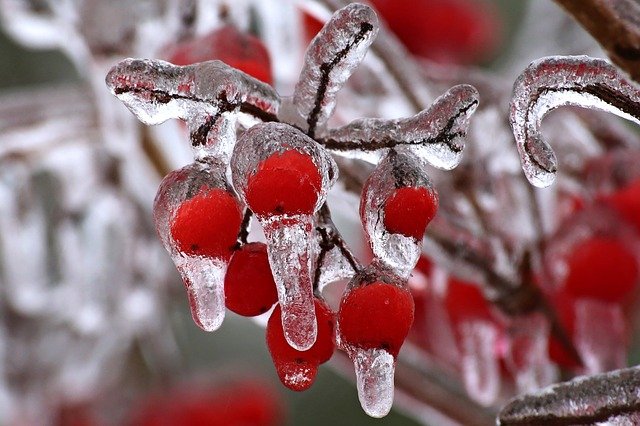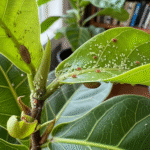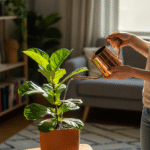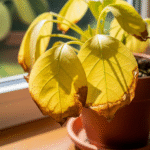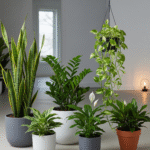Life gets busy—between work, errands, and everyday responsibilities, caring for plants can feel like another full-time job. But the good news? You don’t have to give up on greenery just because your schedule is packed. With the right selection, you can enjoy the beauty and health benefits of indoor plants without constant watering, trimming, or fuss.
Below, we explore the best low-maintenance indoor plants for people who want thriving greenery that fits into their busy lives.
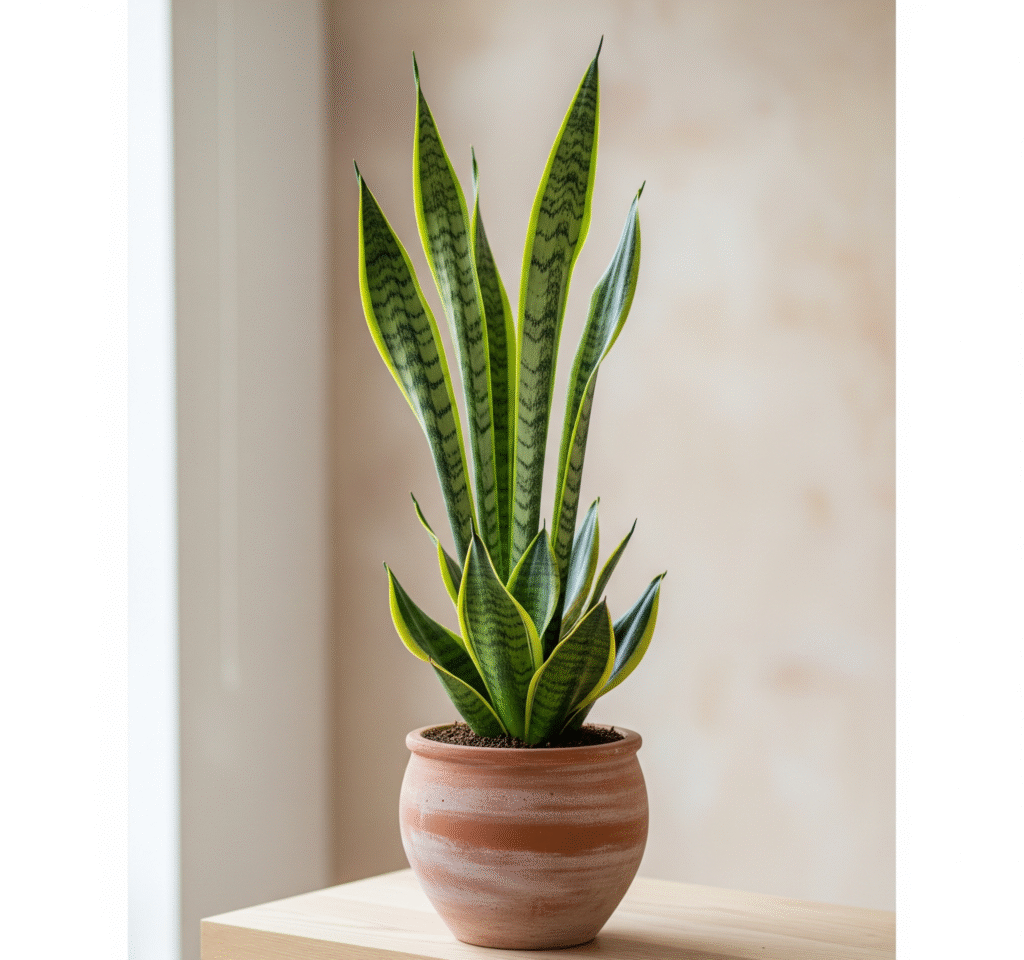
Snake Plant (Sansevieria)
The snake plant, also known as Sansevieria, is one of the most resilient indoor plants you can own. With its striking, upright leaves and ability to thrive in various lighting conditions, it’s perfect for busy people. This plant can survive on minimal water, making it ideal for those who occasionally forget their watering schedule. Its air-purifying qualities also help create a healthier home environment.
Caring for a snake plant is refreshingly simple. It thrives in both low light and bright, indirect sunlight, so placement is flexible. Water only when the soil is completely dry, as overwatering can cause root rot. Among indoor plants, the snake plant stands out for its combination of low maintenance, striking appearance, and long-lasting durability, making it a must-have for beginners and seasoned plant lovers alike.
Snake plants are one of the toughest indoor plants you can own. Their upright, sword-like leaves store water, so they can survive weeks without watering. They also thrive in a variety of lighting conditions—from bright, indirect light to low-light corners.
Care tips:
- Water every 2–3 weeks, or when the soil is completely dry.
- Wipe the leaves occasionally to remove dust.
- Avoid overwatering, as they are prone to root rot.
Snake plants are also known for their air-purifying abilities, making them a perfect blend of beauty and functionality.
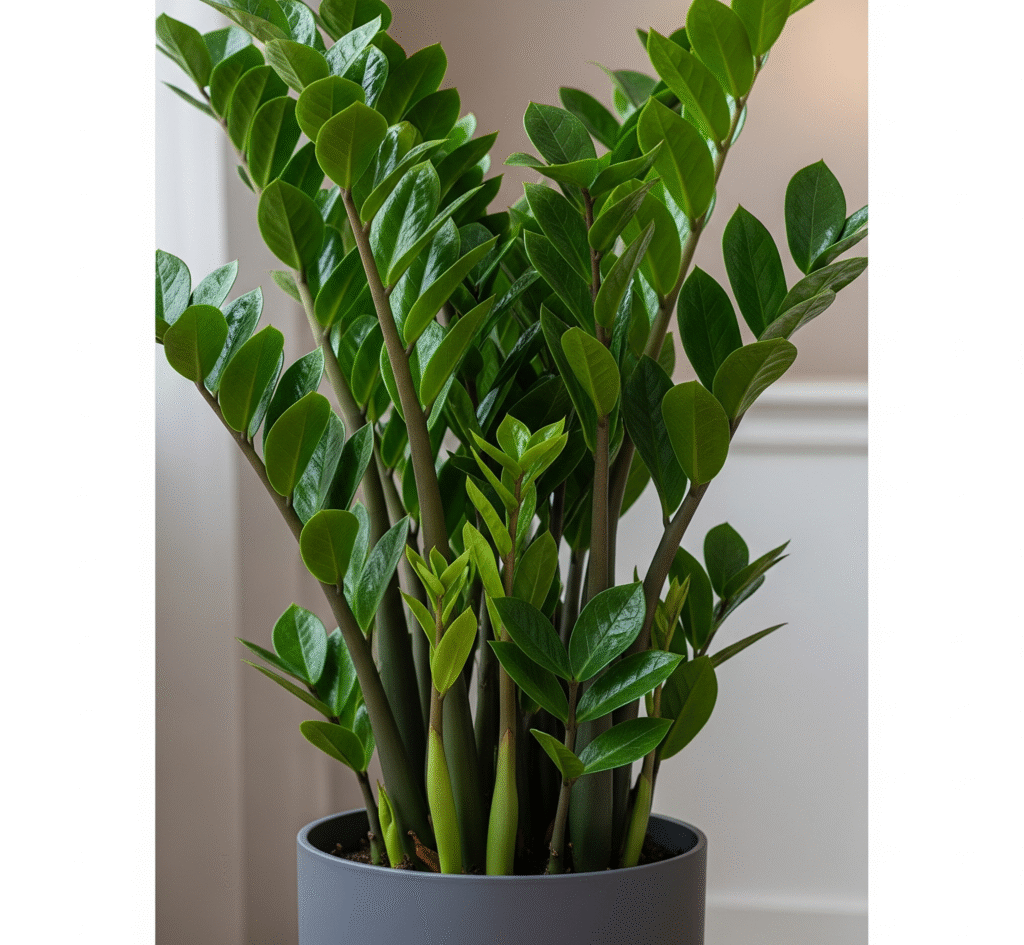
ZZ Plant (Zamioculcas zamiifolia)
The ZZ plant is a popular choice among indoor plants for its glossy green leaves and remarkable ability to thrive in low-light conditions. Known for its toughness, it can withstand weeks without water, making it a perfect option for busy individuals or frequent travelers. Its sleek, modern look also makes it a stylish addition to homes and offices.
Caring for a ZZ plant is incredibly easy. It requires watering only when the soil is completely dry, and it adapts well to both indirect light and shaded areas. Among indoor plants, the ZZ plant is prized for its hardiness, minimal care needs, and year-round beauty, making it a go-to option for those who want greenery without the hassle.
The ZZ plant is practically indestructible. Its glossy green leaves can handle neglect, drought, and low light, making it an ideal plant for busy lifestyles.
Care tips:
- Water once every 3–4 weeks.
- Place in indirect light, though it can tolerate low light.
- Fertilize just once or twice a year.
Its resilience and elegant appearance make the ZZ plant a favorite in modern, minimalistic homes.
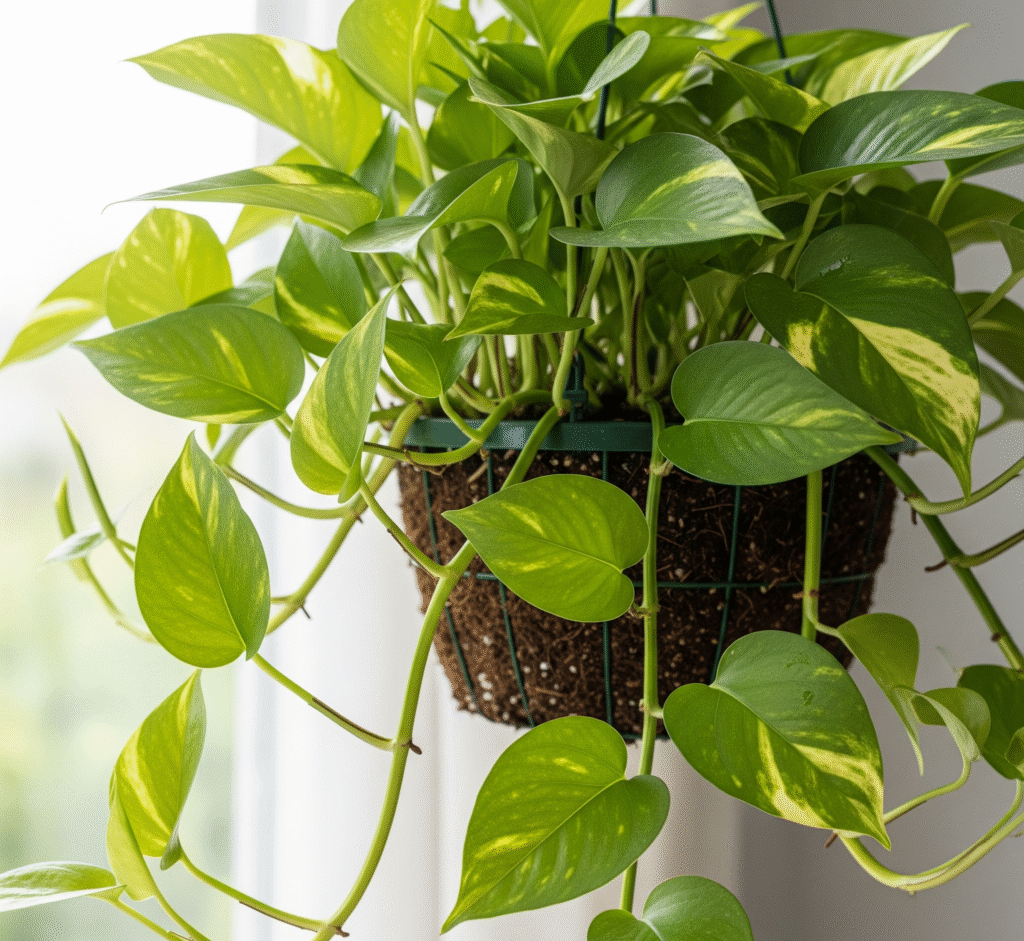
Pothos (Epipremnum aureum)
Pothos is one of the most adaptable and easy-to-grow indoor plants, making it a favorite for both beginners and experienced plant owners. Its heart-shaped, trailing leaves bring a fresh and vibrant touch to any room, whether placed on a shelf, in a hanging basket, or trained to climb. Known for its tolerance to low light and irregular watering, pothos is a forgiving plant for busy lifestyles.
Caring for pothos is simple—just water when the top layer of soil feels dry, and it will thrive in a variety of lighting conditions, from low to bright, indirect light. Among indoor plants, pothos is also valued for its air-purifying abilities, helping to improve indoor air quality while adding beauty to your space. Its low-maintenance nature and decorative appeal make it a must-have in any home or office.
If you want a plant that grows fast and forgives your forgetfulness, pothos is your best friend. This trailing vine is easy to care for and can thrive in various lighting conditions.
Care tips:
- Water when the top 1–2 inches of soil are dry.
- Tolerates low to bright, indirect light.
- Trim occasionally to control its length.
You can let pothos trail from a shelf, hang in a basket, or train it to climb along walls or poles.
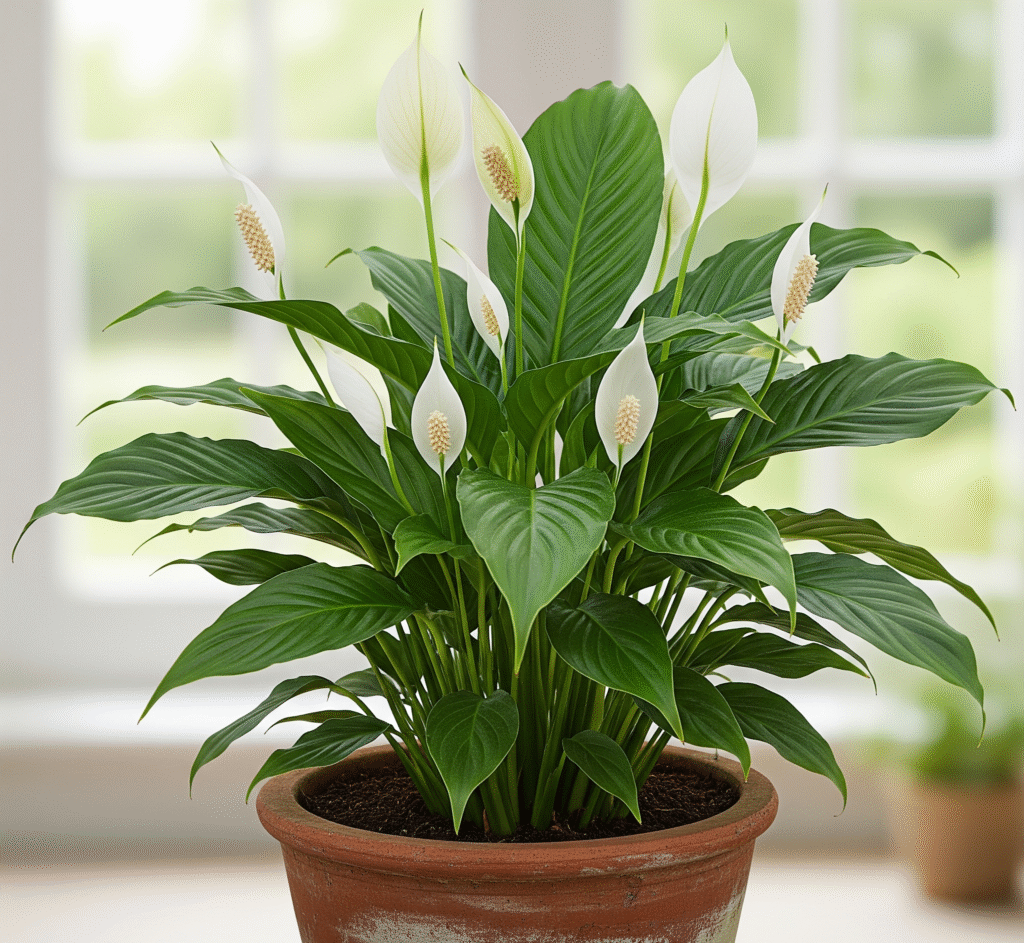
Peace Lily (Spathiphyllum)
The peace lily is a graceful choice among indoor plants, known for its elegant white blooms and lush green foliage. It thrives in medium to low light, making it perfect for brightening shaded corners of your home. This plant also acts as a natural air purifier, removing toxins and improving indoor air quality effortlessly.
Caring for a peace lily is straightforward—water it about once a week or when the leaves begin to droop slightly. Unlike many indoor plants, it rewards you with beautiful flowers even with minimal care. Its combination of beauty, resilience, and air-cleaning benefits makes it a timeless favorite for both home and office spaces.
Peace lilies not only add a tropical touch but also bloom indoors with minimal care. Their white flowers and glossy leaves make them a beautiful focal point.
Care tips:
- Water about once a week or when the leaves start to droop slightly.
- Prefers medium, indirect light but tolerates low light.
- Wipe leaves to keep them shiny and healthy.
Peace lilies also remove toxins from the air, adding a health benefit to their visual appeal.
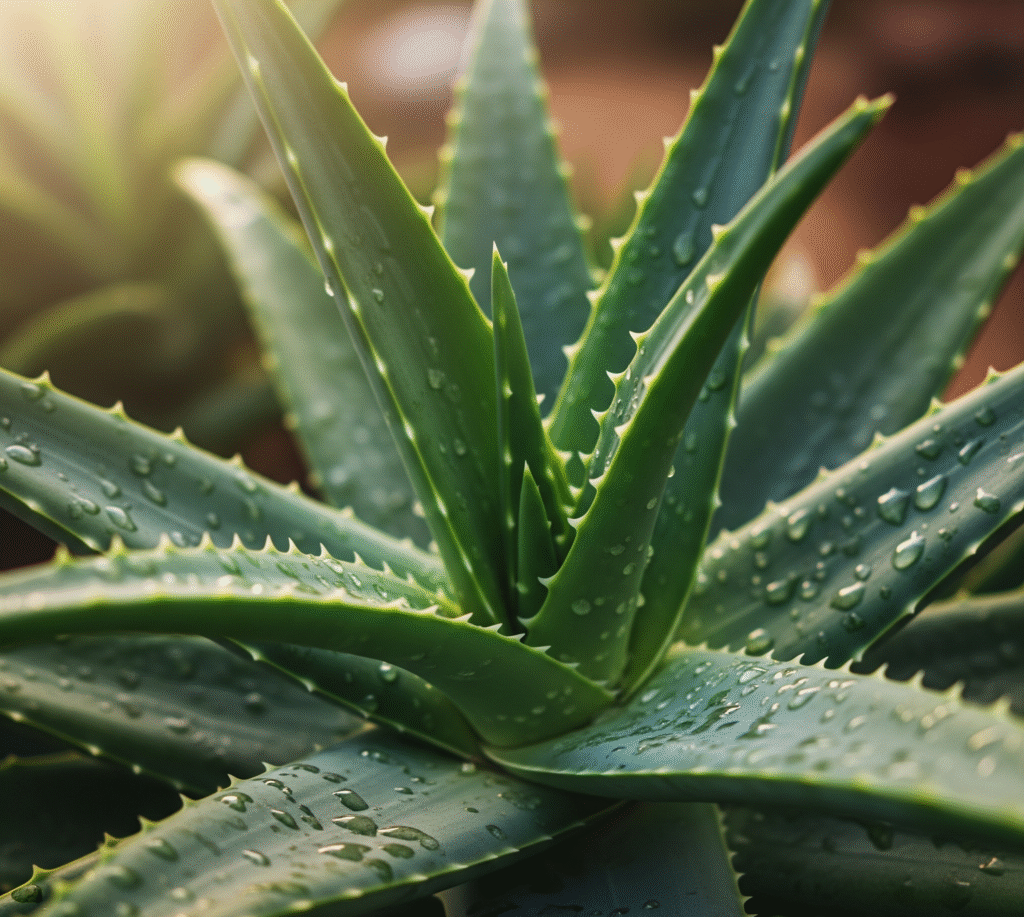
Aloe Vera
Aloe vera is one of the most practical and attractive indoor plants, valued for both its beauty and its healing properties. Its thick, fleshy leaves store water, allowing it to thrive even if you forget to water it for weeks. With its sculptural look and easy care, aloe vera is perfect for adding a modern, green touch to any living space.
This hardy plant prefers bright, indirect sunlight and well-draining soil. Like many drought-tolerant indoor plants, aloe vera only needs watering when the soil is completely dry. Beyond its low-maintenance nature, the gel inside its leaves can be used for soothing minor burns and skin irritations, making it as functional as it is beautiful.
Aloe vera doubles as a low-maintenance houseplant and a natural remedy for minor burns and skin irritation. Its thick, fleshy leaves store water, making it drought-tolerant.
Care tips:
- Water every 2–3 weeks, letting soil dry completely between watering.
- Needs bright, indirect light or a sunny windowsill.
- Avoid overwatering, especially in winter.
With its soothing gel and sculptural look, aloe vera is a practical and stylish choice.
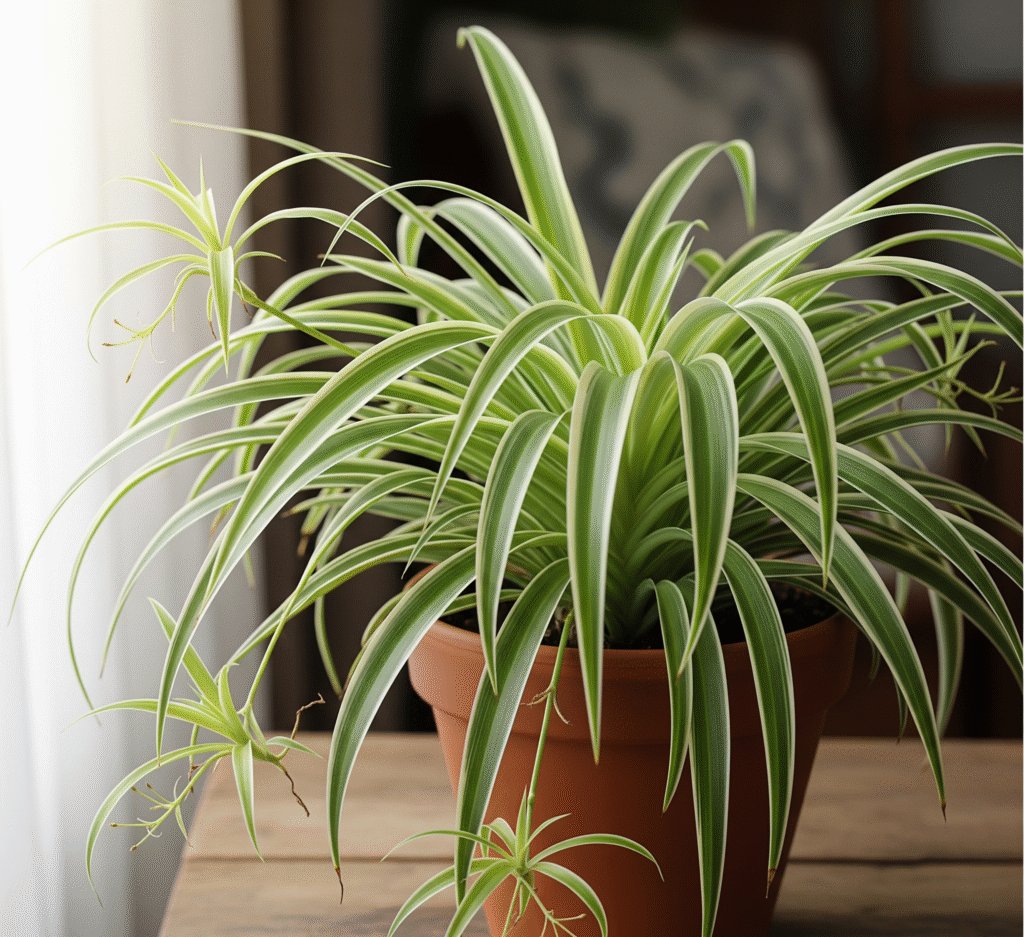
Spider Plant (Chlorophytum comosum)
The spider plant is one of the most charming and adaptable indoor plants, loved for its long, arching leaves and small “baby” plantlets. It thrives in a wide range of environments, making it perfect for beginners or those with busy schedules. Whether placed on a shelf, desk, or in a hanging basket, it adds a fresh, lively feel to any space.
Caring for a spider plant is simple—water when the topsoil feels slightly dry, and keep it in bright, indirect light for the best growth. Like many air-purifying indoor plants, it helps remove toxins from the air while requiring minimal attention. Its quick growth and easy propagation make it a delightful, low-maintenance choice for homes and offices alike.
Spider plants are adaptable, fast-growing, and great for hanging baskets. They produce baby plantlets, or “spiderettes,” that can be easily propagated.
Care tips:
- Water once a week or when soil is slightly dry.
- Thrives in bright, indirect light but tolerates low light.
- Remove brown leaf tips with clean scissors.
Their arching leaves and air-purifying properties make them a cheerful addition to any room.
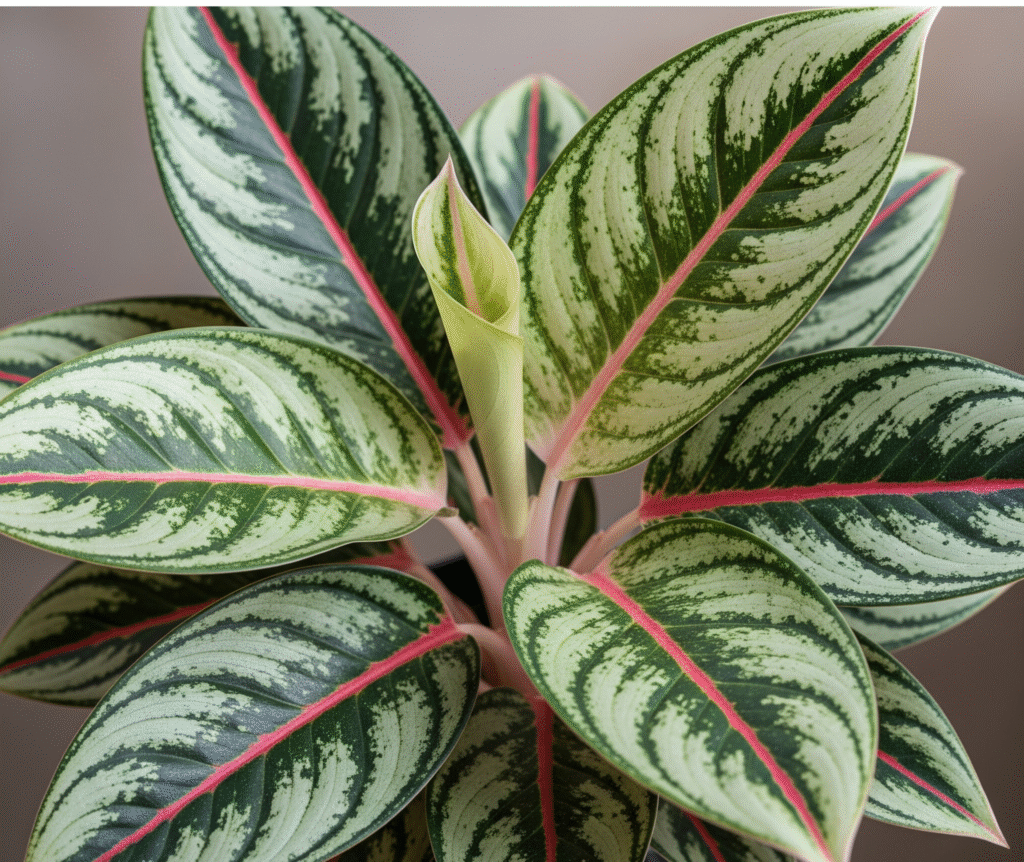
Chinese Evergreen (Aglaonema)
The Chinese evergreen is a versatile and visually striking option among indoor plants, known for its colorful foliage that ranges from deep green to vibrant shades of pink and red. It thrives in low to medium light, making it ideal for spaces with limited sunlight. This hardy plant can handle occasional neglect, making it perfect for busy individuals.
Caring for a Chinese evergreen is effortless—water it every 2–3 weeks or when the topsoil becomes dry. Like many indoor plants, it benefits from occasional leaf cleaning to keep its vibrant colors shining. Its combination of beauty, resilience, and low-maintenance needs makes it a standout choice for both homes and offices.
Chinese evergreens are valued for their vibrant, patterned leaves and ability to survive in low-light environments.
Care tips:
- Water every 2–3 weeks.
- Tolerates low to medium light.
- Wipe leaves to keep them free from dust.
This plant’s colorful foliage—from green and silver to red and pink—brings life to spaces where many plants struggle to grow.
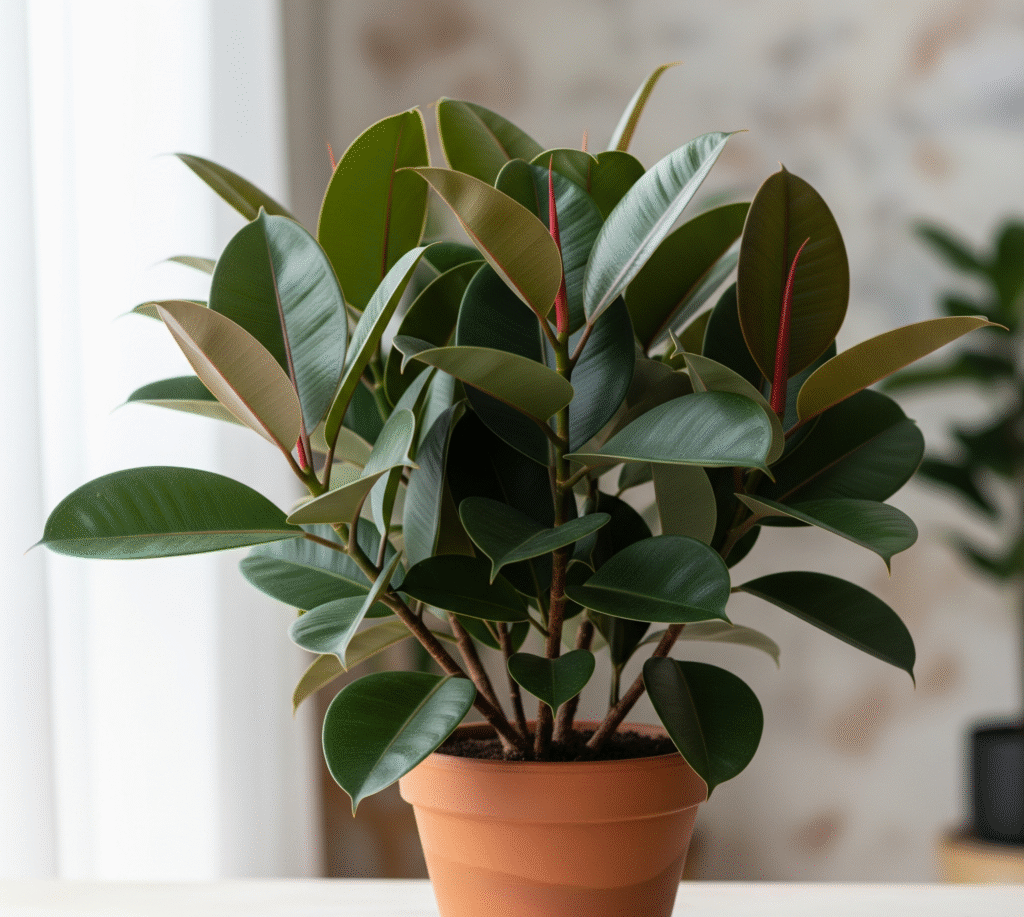
Rubber Plant (Ficus elastica)
The rubber plant is a bold and stylish choice among indoor plants, recognized for its large, glossy leaves that add a touch of elegance to any room. It grows well in bright, indirect light but can also adapt to moderate light conditions. Its sturdy nature makes it a favorite for those who want a statement plant without the hassle of daily care.
To keep a rubber plant healthy, water it when the top inch of soil feels dry, and wipe its leaves regularly to maintain their shine. Like many indoor plants, it benefits from occasional rotation to ensure even growth. With its low-maintenance needs and eye-catching appearance, the rubber plant is perfect for adding a sophisticated, green accent to your living or working space.
The rubber plant is a sturdy indoor tree with thick, glossy leaves. It’s low maintenance but makes a bold style statement.
Care tips:
- Water when the top inch of soil is dry.
- Needs bright, indirect light for best growth.
- Dust the leaves regularly for shine and health.
Rubber plants grow slowly indoors, so you won’t have to repot often.
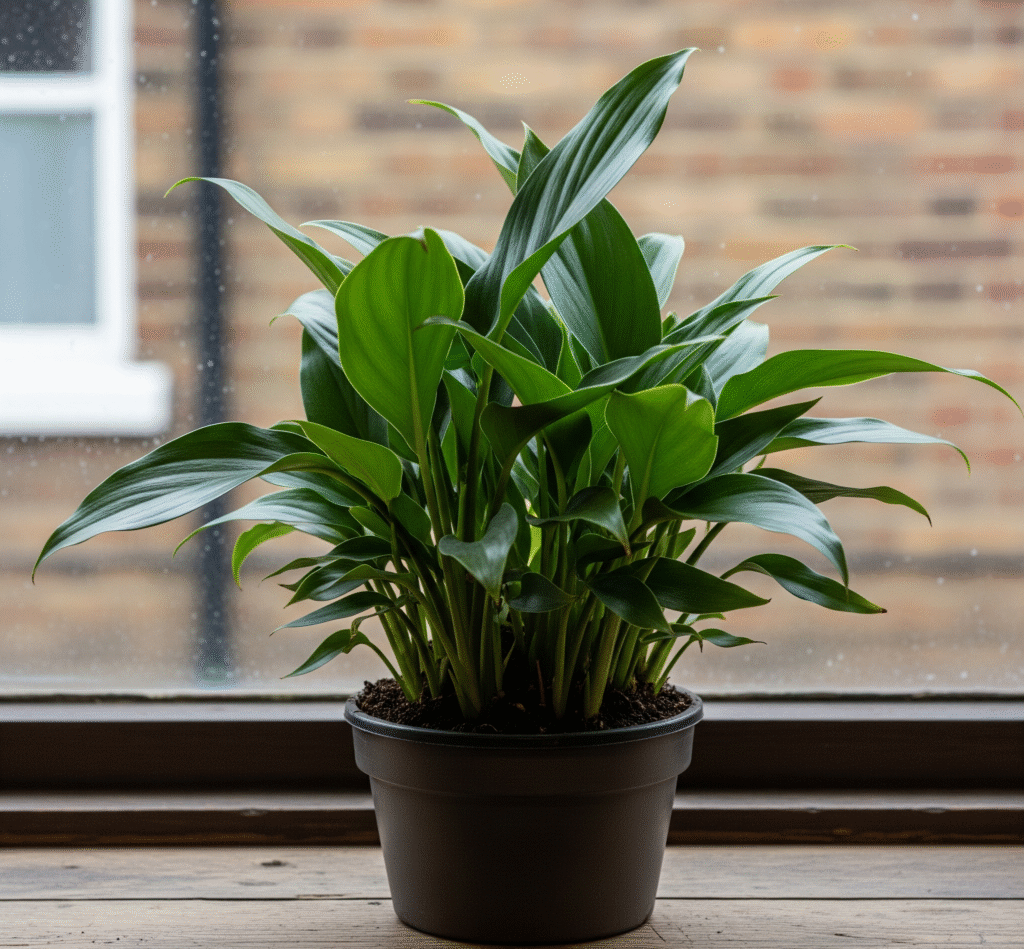
Cast Iron Plant (Aspidistra elatior)
The cast iron plant is one of the toughest indoor plants, living up to its name by thriving in conditions where many others would struggle. With its deep green, broad leaves, it adds a lush and elegant touch to any space, even in low-light corners. Its ability to handle neglect makes it a perfect option for busy homeowners or offices.
Caring for a cast iron plant is simple—water it every 2–3 weeks, allowing the soil to dry slightly between waterings. Like other hardy indoor plants, it requires minimal feeding and is resistant to most pests. Its long-lasting foliage and low-maintenance nature make it a reliable, timeless choice for adding greenery to your home.
True to its name, the cast iron plant is nearly indestructible. It tolerates neglect, low light, and irregular watering.
Care tips:
- Water when soil is dry—about every 2–3 weeks.
- Perfect for shady spots.
- Minimal feeding—just once or twice a year.
Its lush, dark green leaves add elegance to any low-light corner of your home.
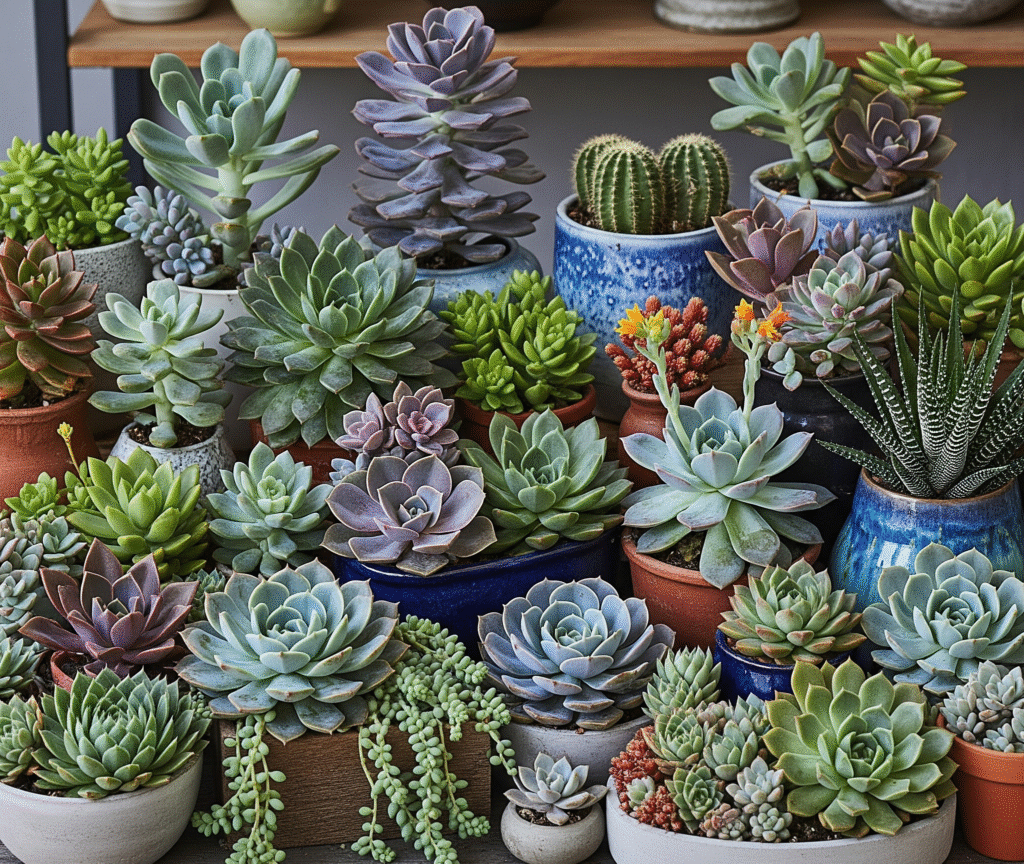
Succulents
Succulents are a diverse group of indoor plants known for their unique shapes, vibrant colors, and water-storing leaves. They thrive in bright, sunny spots and require very little watering, making them perfect for people with busy schedules or minimal gardening experience. Their compact size also makes them ideal for desks, shelves, and small apartments.
Caring for succulents is straightforward—water them only when the soil is completely dry, usually every 2–4 weeks. Like many drought-tolerant indoor plants, they prefer well-draining soil to prevent root rot. With their striking appearance and low-maintenance needs, succulents are both a decorative and practical choice for adding greenery to your space.
Succulents come in a variety of shapes, sizes, and colors, all sharing the same trait—water storage in their leaves, which makes them incredibly drought-tolerant.
Care tips:
- Water every 2–4 weeks, depending on the season.
- Needs bright light, ideally near a sunny window.
- Use well-draining soil to prevent root rot.
You can arrange different succulents in decorative pots for a charming, low-effort display.
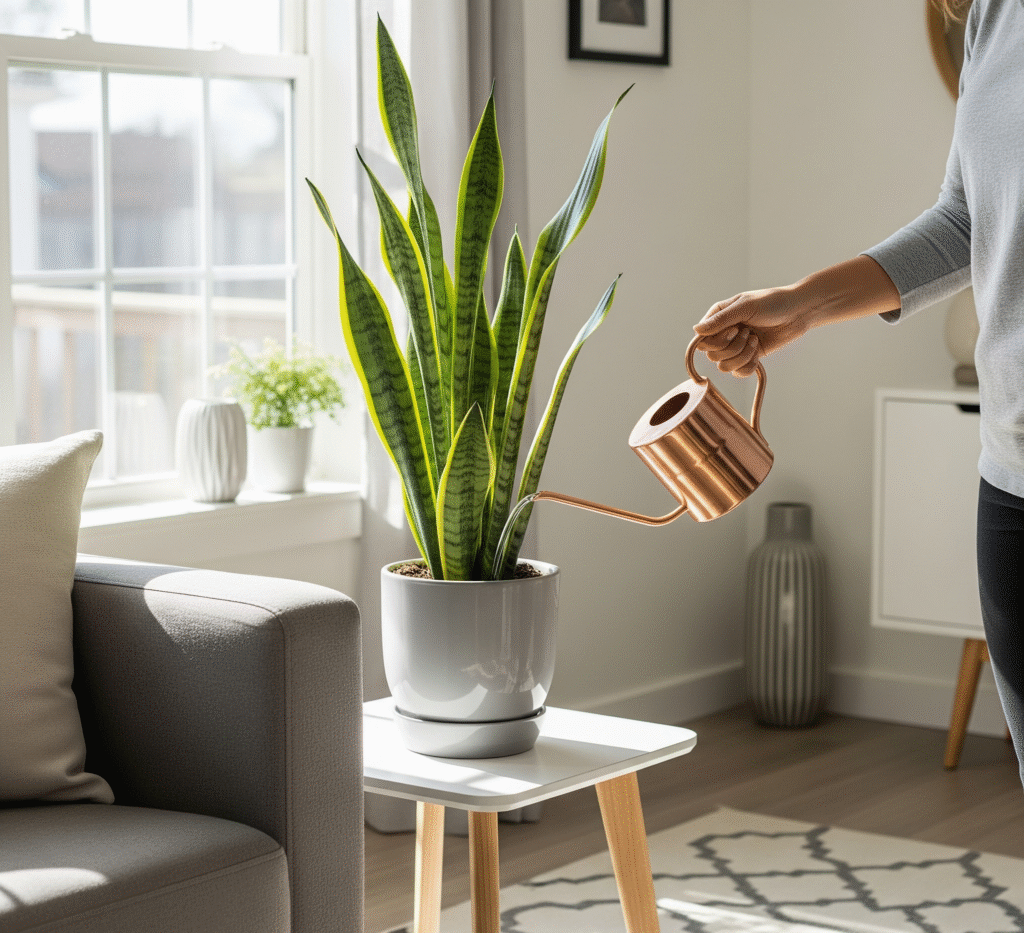
Extra Tips for Caring for Low Maintenance Plants
Even low-maintenance plants need some basic care to thrive. Keep these tips in mind:
- Avoid overwatering—this is the most common cause of plant problems.
- Dust leaves regularly to allow better light absorption.
- Use the right potting mix for each plant type.
- Place in suitable light—even shade-tolerant plants benefit from occasional brighter light.
- Rotate plants every few weeks to ensure even growth.

